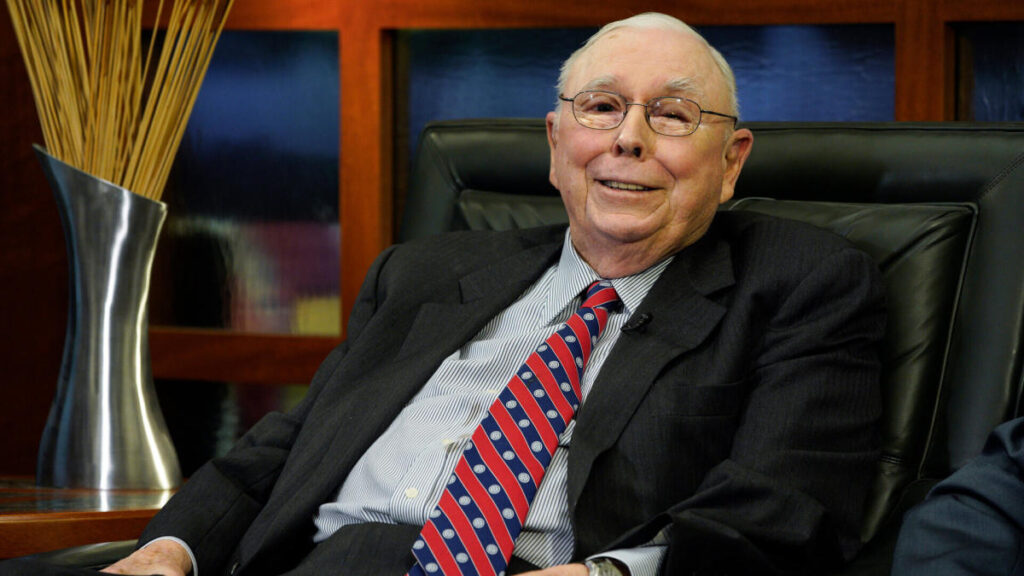Charlie Munger Pockets $70,000 a Year From a $1,000 Investment He Made in 1962 – And Has Likely Raked in Over $1 Million in Total
In a remarkable display of the power of long-term investing, Charlie Munger, the esteemed business partner of Warren Buffett, has been cashing in on a $1,000 investment he made over six decades ago.

During Berkshire Hathaway’s annual shareholder meeting, Munger disclosed the details of his lucrative oil royalty investment, which now nets him a cool $70,000 yearly, possibly accumulating to over $1 million in total earnings.
The story of Munger’s savvy investment began in 1962 when he crossed paths with a businessman named Al Marshall during a husband-and-wife golf tournament. At the third hole, Marshall divulged his plan to participate in a local oil royalty auction. Munger, known for his candidness, immediately offered his perspective, stating, “You’re doing it all wrong.”
Munger didn’t stop at offering advice; he joined Marshall’s bid, bringing his expertise to manage the intricate legal and financial aspects of their purchases. His investment was structured using an ABC trust, a tax shelter that has since been prohibited.
Marshall, reflecting on the investment, revealed in Janet Lowe’s book, “Damn Right!: Behind the Scenes with Berkshire Hathaway Billionaire Charlie Munger,” “We only put up $1,000 each and we’ve each probably made a half a million out of it.”
Munger himself corroborated the story during Daily Journal’s shareholder meeting in 2016, shedding light on the unusual dynamics of the oil royalty market. “I soon realized that under the peculiar rules of an idiot civilization, the only people who were going to bid for these oil royalties were oil royalty brokers, who were a scroungy, dishonorable, cheap bunch of bastards who realized that nobody would ever bid at their price,” he quipped.
While the exact annual income from these royalties might vary—ranging from $70,000 to $100,000—Munger’s substantial earnings over the years are undeniable. This passive income stream partly explains why Munger has accepted a modest $100,000 salary from Berkshire Hathaway for many decades. Furthermore, he maintains most of his approximately $2 billion fortune in Berkshire stock, which doesn’t pay dividends.
Read more: A Paper Boy Surviving At $3 A Day: How This US Entrepreneur Turned Millionaire At 23
Warren Buffett added another intriguing layer to the story during the same shareholder meeting. He disclosed that Munger isn’t the only one benefiting from age-old oil royalties within their circle. Buffett’s own father invested $1,000 to $1,500 in similar royalties before his passing. Today, these royalties are held by Buffett’s younger sister, who continues to receive monthly checks, reinforcing the enduring appeal of such investments.
Charlie Munger’s journey from a $1,000 investment to a consistent annual income of $70,000 exemplifies the remarkable potential of long-term investments and the power of compounding. It serves as a valuable reminder that in the world of finance, patience and astute decision-making can yield incredible rewards over time.






